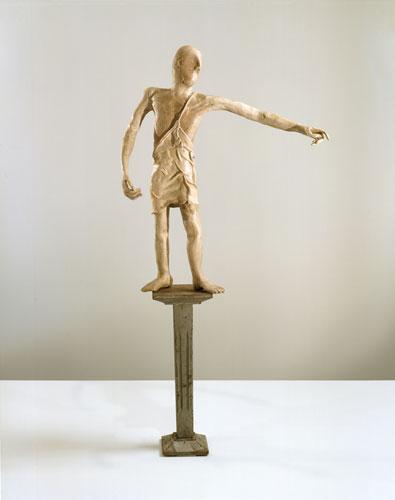Francis Upritchard
September 9 – October 8, 2005
Gallery 2
Francis Upritchard's aesthetic and philosophical agenda of the reclaimed, reused, and reincorporated is so integral to her nature that it fully infuses her lifestyle as well as her work. She lives a scavenger's life in a reclaimed house, her clothes are almost exclusively from second hand stores.... Upritchard's sculpture is another fold of this investment in transforming existing material – be it organic or man made. The majority of her work to date combines preexisting parts – fake Wedgwood vases, ceramic lamp bases, old jewelry…with elements she has created to transform what one might assume could be nostalgic-laden objects into her own. Information and resources from the past mix to create new ideas and forms. Although many of the preexisting materials Upritchard uses are faux high craft, there is also an essential relationship to the embedded meaning and aesthetic physicality of raw materials - clay, skin, and rubber.
One body of work to be exhibited in Gallery 2 is made from balata - - a natural rubber from South America. Upritchard began using this material while on a residency in Brazil where balata is used to make small tourist trinkets by masters of the craft. By carefully studying longstanding techniques with local craftsmen, Upritchard uses this natural and historical material to make full scale sculptures that are exemplary of her particular thinking and process. A material new-to-her combined with an existing methodology underscores Upritchard's fancy.
This and other bodies of work – faux-Maori objects, field hockey sticks and other sporting equipment carved into the shape of animals, funerary urns, shrunken monkey heads made from found fur and old leather gloves, mingle as a sort of new history.
In conjunction with an exhibition at Salon 94


